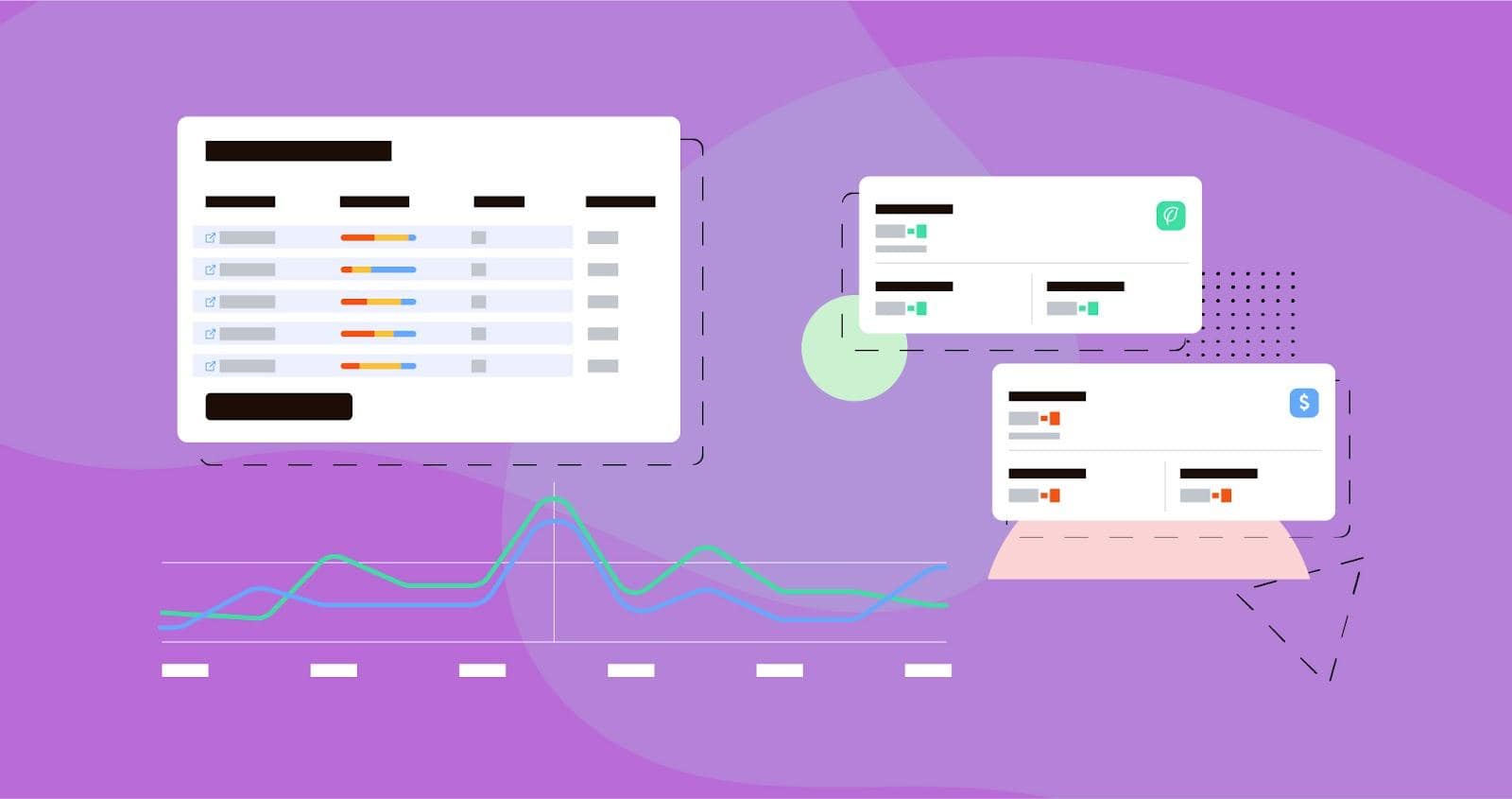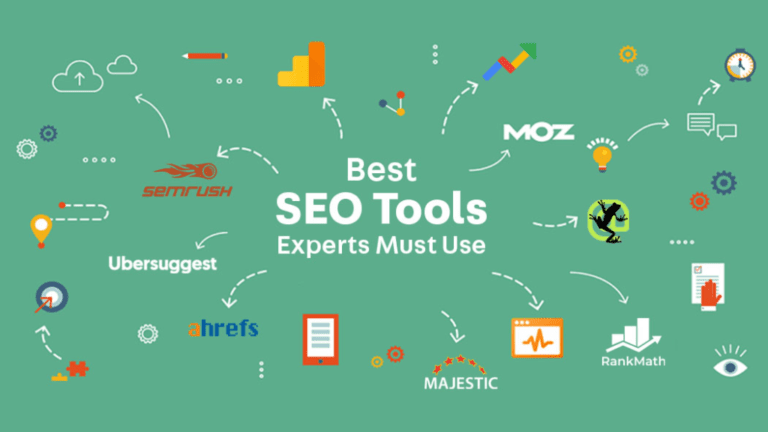Best SEO Competitor Analysis Tool: Boost Your Rankings Today
The best SEO competitor analysis tool is SEMrush. It offers comprehensive insights into competitors’ strategies and performance.
SEMrush is a powerful tool that helps businesses analyze their competitors’ SEO tactics. This tool provides detailed data on competitors’ keywords, backlinks, and overall search engine performance. Users can uncover gaps in their own strategies and find opportunities to improve their SEO efforts.
SEMrush also offers features like site audits, rank tracking, and traffic analysis. These features ensure businesses stay ahead in the competitive digital landscape. Easy to use and highly effective, SEMrush is a go-to resource for companies looking to enhance their SEO strategies. It empowers businesses to make informed decisions and achieve better search engine rankings.
Introduction To SEO Competitor Analysis
SEO competitor analysis helps you understand your competitors’ strategies. It reveals their strengths and weaknesses. This information can guide your SEO efforts. Knowing what works for others can help you succeed.
Importance Of Competitor Analysis
Competitor analysis is crucial for SEO success. It helps identify the best keywords. You can see what keywords your competitors rank for. This can help you target the right keywords.
Analyzing competitors also reveals their backlink strategies. Backlinks are essential for SEO. Knowing where your competitors get backlinks can give you ideas.
Competitor analysis also helps you understand content strategies. Good content is key for SEO. By analyzing your competitors’ content, you can improve your own.
| Aspect | Benefit |
|---|---|
| Keywords | Identify high-ranking keywords |
| Backlinks | Find backlink opportunities |
| Content | Improve your content strategy |
How It Boosts Rankings
SEO competitor analysis can improve your rankings. By targeting the right keywords, you can rank higher. Competitor analysis helps you find these keywords.
Backlinks are another ranking factor. By finding where competitors get backlinks, you can get similar ones. This can boost your SEO.
Content quality is also important. By analyzing competitors’ content, you can create better content. This can improve your rankings.
- Identify high-ranking keywords
- Find backlink opportunities
- Improve content quality
Key Features Of An Effective Tool
Choosing the best SEO competitor analysis tool can be challenging. The right tool helps you stay ahead in the competitive landscape. Here are the key features of an effective tool.
Comprehensive Keyword Research
An effective SEO tool offers comprehensive keyword research. It helps you find the best keywords your competitors use. You can uncover high-traffic keywords and long-tail variations. It should provide keyword difficulty scores and search volume data. This helps you target keywords that are easier to rank for.
- Keyword difficulty scores
- Search volume data
- Long-tail keyword suggestions
Backlink Analysis
Backlink analysis is crucial for understanding your competitors’ strengths. A good tool shows the number and quality of backlinks they have. It highlights the sources of these backlinks. You can identify opportunities for your own link-building strategy. The tool should also track changes in your competitors’ backlinks over time.
| Feature | Description |
|---|---|
| Number of backlinks | Shows total backlinks to competitor sites. |
| Quality of backlinks | Evaluates the strength of each backlink. |
| Source of backlinks | Identifies the origin of each backlink. |
Traffic Insights
Understanding traffic insights gives you a competitive edge. A top tool provides data on your competitors’ traffic sources. You can see which pages drive the most traffic. It should show organic, paid, and referral traffic. This helps you adjust your strategies for better results.
- Organic traffic data
- Paid traffic insights
- Referral traffic information
- Top-performing pages
Top Seo Competitor Analysis Tools
To stay ahead in the SEO game, you need the best tools. These tools help you understand what your competitors are doing. They give you insights to improve your own strategies.
Semrush
SEMrush is a popular tool for SEO analysis. It helps you find keywords and track your rankings. You can also see your competitor’s traffic. This tool offers detailed reports. It helps you understand your competitors better.
- Keyword research
- Traffic analysis
- Competitor rankings
Ahrefs
Ahrefs is another powerful SEO tool. It offers a comprehensive backlink analysis. You can also track your site’s performance. It helps you find content gaps. This way, you can create better content than your competitors.
- Backlink analysis
- Site performance tracking
- Content gap analysis
Moz Pro
Moz Pro is a robust SEO tool. It provides keyword research and site audits. You can track your site’s rankings. It also offers insights into your competitors’ strategies. This helps you plan your own strategies better.
- Keyword research
- Site audits
- Competitor insights
Spyfu
SpyFu is great for spying on your competitors. It shows you their top keywords. You can also see their ad campaigns. This tool helps you understand your competitors’ strategies. You can use this information to improve your own campaigns.
- Top keyword analysis
- Ad campaign insights
- Competitor strategy analysis
| Tool | Main Feature | Benefit |
|---|---|---|
| SEMrush | Traffic Analysis | Understand competitor traffic |
| Ahrefs | Backlink Analysis | Track site performance |
| Moz Pro | Site Audits | Plan better strategies |
| SpyFu | Competitor Keywords | Improve your campaigns |

Credit: www.link-assistant.com
How To Choose The Right Tool
Choosing the right SEO competitor analysis tool can be challenging. Many options are available. It’s essential to find the one that fits your needs. Below are some key factors to consider.
Budget Considerations
Before selecting a tool, determine your budget. Tools range from free to premium.
| Tool | Price Range | Features |
|---|---|---|
| Free Tool | $0 | Basic features |
| Mid-Range Tool | $50 – $150/month | Advanced features |
| Premium Tool | $150+/month | Comprehensive features |
Ease Of Use
Ease of use is crucial. Tools should be user-friendly. A complicated tool can waste time and resources.
- Look for intuitive interfaces.
- Consider tools with good customer support.
- Check if they offer tutorials and guides.
Specific Needs
Define your specific needs before choosing a tool. Do you need keyword analysis, backlink tracking, or site audits?
- List your SEO goals.
- Match tools with your needs.
- Test a few tools before deciding.
For example:
| Need | Recommended Tool |
|---|---|
| Keyword Analysis | SEMrush |
| Backlink Tracking | Ahrefs |
| Site Audits | Moz Pro |
Remember, the best tool fits your specific needs and budget.
Step-by-step Guide To Using The Tool
Using a competitor analysis tool can boost your SEO strategy. This guide will help you use the tool effectively. Follow these steps to gain insights and optimize your site.
Setting Up Your Account
First, visit the tool’s website and sign up. Use your email and create a password. Check your email for a confirmation link. Click the link to verify your account. Once verified, log in to the tool.
Next, complete your profile. Enter your website details. Add your industry and target audience. This information helps the tool give better results.
Entering Competitor Information
Once your account is set up, you need to enter competitor information. Go to the dashboard and find the ‘Add Competitor’ option. Enter the URLs of your main competitors. You can add multiple competitors for a broader analysis.
Make sure to enter accurate and active URLs. This ensures the data you get is relevant and useful. You can always update or remove competitors as needed.
Analyzing Data
After entering competitor information, the tool will start analyzing data. This process may take a few minutes. The tool will gather data on keywords, backlinks, and traffic.
Use the dashboard to view the data. You will see metrics like keyword rankings, backlink profiles, and traffic sources.
| Metric | Description |
|---|---|
| Keyword Rankings | Shows where competitors rank for specific keywords. |
| Backlink Profiles | Displays the websites linking to competitors. |
| Traffic Sources | Indicates where competitors’ traffic comes from. |
Use filters to refine the data. Focus on the most important keywords and backlinks. Create a strategy to outrank your competitors using this data.
Download the reports for detailed insights. Share these with your team to plan your next steps.
Interpreting The Results
Interpreting the results of an SEO competitor analysis is critical for your strategy. This step reveals your competitors’ strengths and weaknesses. Understanding these details helps you make better decisions. Let’s break it down into actionable insights.
Identifying Competitor Strengths
Spotting your competitors’ strengths is essential. Look for high-ranking keywords. Notice the quality of their backlinks. Check their content strategy. Are they using videos or infographics? Understand their on-page SEO elements. This includes title tags, meta descriptions, and headers.
| Strength | Details |
|---|---|
| High-ranking Keywords | Keywords that consistently rank in the top 10 positions. |
| Quality Backlinks | Backlinks from high-authority websites. |
| Content Strategy | Use of engaging content like videos and infographics. |
| On-page SEO | Effective use of title tags, meta descriptions, and headers. |
Spotting Weaknesses
Finding your competitors’ weaknesses gives you an edge. Look for low-quality backlinks. Notice gaps in their content. Check their page load speeds. These factors can affect their ranking. Identify poor user experience elements. This includes confusing navigation and slow-loading images.
- Low-quality backlinks from spammy sites.
- Content gaps missing valuable keywords.
- Slow page load speeds affect user experience.
- Confusing navigation and slow-loading images.
Actionable Insights
Use the data to your advantage. Target keywords your competitors miss. Create high-quality backlinks. Improve your content strategy. Optimize your on-page SEO elements. Fix any user experience issues. Implementing these steps can improve your rankings.
- Target missed keywords.
- Create quality backlinks.
- Improve content strategy.
- Optimize on-page SEO elements.
- Fix user experience issues.
These actionable insights turn analysis into improvement. Your SEO strategy will benefit greatly.
Implementing Your Findings
After conducting an SEO competitor analysis, it’s crucial to implement your findings effectively. This step will help you to improve your website’s visibility and performance. Let’s delve into some key areas where you can apply these insights.
Optimizing Your Website
Website optimization is essential for better search rankings. Start by addressing your site’s speed and mobile-friendliness. These factors are critical for user experience.
- Speed: Use tools like Google PageSpeed Insights to identify issues.
- Mobile-Friendliness: Ensure your site is responsive on all devices.
Also, pay attention to your on-page SEO elements:
- Meta Tags: Optimize your titles and descriptions with relevant keywords.
- URLs: Keep them short and keyword-rich.
- Header Tags: Use H1, H2, and H3 tags appropriately.
Content Strategy Adjustments
Adjusting your content strategy based on competitor analysis can help you to stay ahead. Focus on creating high-quality, engaging content.
- Keyword Research: Identify the keywords your competitors rank for.
- Content Gaps: Find topics they haven’t covered well.
- Content Types: Use a mix of blogs, videos, and infographics.
Regularly update your content to keep it fresh and relevant. This practice will help you attract more traffic and retain visitors.
Link Building Strategies
Effective link-building can significantly boost your SEO efforts. Analyze your competitors’ backlinks to identify opportunities.
| Strategy | Description |
|---|---|
| Guest Posting | Contribute articles to reputable sites in your niche. |
| Broken Link Building | Find broken links on other sites and suggest your content as a replacement. |
| Resource Pages | Get your content listed on resource pages relevant to your niche. |
Track your backlinks regularly to ensure they remain active and relevant. This strategy will help you to build a strong backlink profile over time.

Credit: management.org
Monitoring And Adjusting Strategies
Effective SEO competitor analysis requires ongoing monitoring and strategy adjustments. This ensures your SEO efforts remain competitive and adaptive. Below, we discuss key areas to focus on while monitoring and adjusting your strategies.
Regular Performance Checks
Regular performance checks are crucial for maintaining SEO success. Use tools to track your rankings, traffic, and engagement. Identify which keywords are performing well and which are not. Adjust your focus accordingly to maximize visibility and traffic.
Create a schedule for performance checks, whether weekly or monthly. Consistency helps in spotting trends and making timely adjustments. Use data from tools like Google Analytics and SEMrush to guide your decisions.
| Metric | Tool | Frequency |
|---|---|---|
| Keyword Rankings | SEMrush | Weekly |
| Website Traffic | Google Analytics | Monthly |
| Backlink Profile | Ahrefs | Quarterly |
Adapting To Market Changes
The SEO landscape is constantly changing. Competitors may alter their strategies, and search algorithms evolve. Stay informed about market trends and adjust your approach accordingly.
Follow industry news and updates from search engine blogs. Adapt your content, keywords, and tactics to align with new trends. This keeps your strategy relevant and effective.
- Read SEO blogs and forums
- Attend industry webinars
- Subscribe to SEO newsletters
Continuous Improvement
SEO is not a one-time effort. Continuous improvement ensures long-term success. Regularly update your content, optimize your website, and refine your keyword strategy.
Conduct A/B testing to see what works best. Use insights from competitor analysis tools to find opportunities for growth. Always look for ways to enhance your strategy and stay ahead.
- Update old content
- Improve site speed
- Refine keyword usage
Frequently Asked Questions
What Is The Best SEO Competitor Analysis Tool?
The best SEO competitor analysis tool depends on your needs. Popular choices include Ahrefs, SEMrush, and Moz. These tools offer comprehensive features. They help you analyze competitors’ keywords, backlinks, and traffic. Choose one that fits your budget and requirements.
How Do SEO Competitor Analysis Tools Work?
SEO competitor analysis tools collect data from various sources. They analyze competitors’ keywords, backlinks, and traffic. These tools provide insights into competitors’ strategies. This helps you improve your SEO performance. They also identify opportunities and threats in your niche.
Why Use SEO Competitor Analysis Tools?
SEO competitor analysis tools help you understand your competitors. They provide insights into competitors’ strategies. This helps you improve your SEO efforts. You can discover new keywords and backlink opportunities. They also help you stay ahead in the competitive market.
Which Features Should I Look For?
Look for tools with comprehensive keyword analysis. Backlink data is also essential. Traffic insights are valuable too. Competitor comparisons and site audits are important features. Choose a tool that offers a user-friendly interface. Ensure it fits your budget.
Conclusion
Choosing the best SEO competitor analysis tool can greatly impact your website’s success. These tools provide valuable insights into your competition. By leveraging this data, you can optimize your strategies and stay ahead. Invest in the right tool and watch your rankings soar.
Your SEO efforts will become more efficient and effective.






